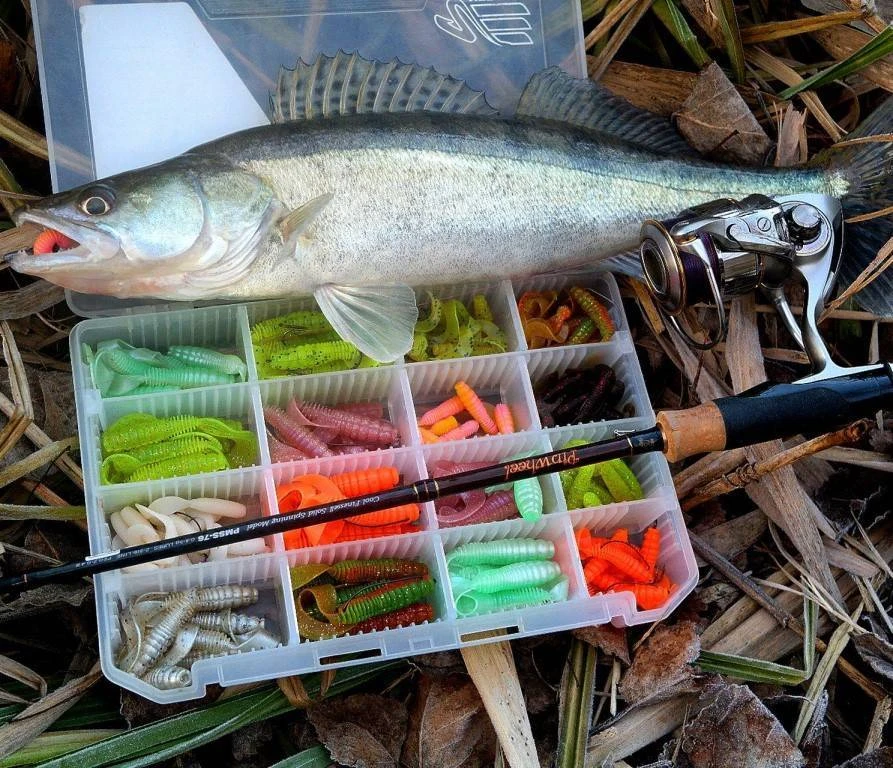Fishing for starlings in the fall is enjoyed by many spinners. Starkey becomes more active as the water cools, switches to increased feeding. To catch a starling, you only need to familiarize yourself with the specifics of fishing for starlings in the fall, relying on knowledge of their habitats, and use a simple arsenal of baits and tackle.
In addition to spinning and trolling, fishing for starlings in autumn can also be done using live bait on bottom rods, but recently the popularity of these methods has begun to decline.
Where to find a starling
Starkey is a species of fish that is sensitive to the presence of oxygen in the water. Therefore, its habitats are characterized by areas of clean water and the presence of currents, which promote mixing and oxygenation of water masses. In rivers, the predator settles in hard sandy or clayey soils, avoiding dense water thickets and muddy areas.
The depth varies from 3 to 20 meters. At the bottom, groups of starlings look for various irregularities, ledges, pits, ditches and occupy these anomalies as an ambush.
Hydrological objects, areas near dams, bridges and embankments, where the predator goes in search of food, are also considered promising places for fishing. In autumn, fish migrations are observed, when schools of bream move to the winter deep places of rivers and lakes.
Important!
It is worth noting that starlings are not lovers of coastal areas and try to stay away from the coast in clear water.
Starling fishing in autumn from a boat seems more attractive than fishing from the shore, because you will have more opportunities to look for promising fishing spots.

Peculiarities of autumn behavior of starlings
Starkeys fall fishing based on the diversity of fish behavior in the first and second part of the season. If the so-called summer-autumn period from September to mid-October is no different from the fishing strategy in the summer, then the following October and the whole of November, the autumn-winter time, drastically changes the fishing tactics. This radical change is associated with increased winter migration of predators following carp species, which migrate to hibernation holes for the entire winter period. The increased movement of bream forces schools of starlings to leave their homes and move to the deepest waters of the reservoir, where starling fishing on the edges of holes becomes most successful in November.
Starling fishing in autumn is the best time
In September starlings fishing intensity practically does not differ from fishing in the summer months. In relatively warm waters, there is still enough food, and the predator is picky. Fishing mostly carried out at night, when fishing from dusk to dawn. Calm nights with increased atmospheric pressure activate starling baiting.
Fishing in October becomes much more interesting, and this autumn month is considered the most productive season for starfish fishing. In October, baiting is stable both in the dark and on cloudy days. The decrease in fish activity is only influenced by prolonged rains and unfavorable weather with strong north and northeast wind directions. Two or three days of calm and cloudy weather. Trophy specimens can be caught during this period.
November weather forces the predator to go to warmer waters in the pits, where at great depths the fish are active all day, periodically, at certain intervals, they go out to hunt, which is very similar to the behavior of pike.

Equipment selection for a beginner
The methods of starling fishing in autumn can be divided according to the type of bait used. Among them, the most popular are jig and drop-shot, where silicone baits play the main role. Fast or semi-fast spinning stocks are selected for fishing fishing rods, with the help of which it is possible to quickly react to baiting.
Using slow fishing rods action, the hard mouth of a starling is unlikely to be pierced by a hook, this must be taken into account when choosing a fishing rod. Spinning tests depend on the weight of the bait. Spinning for a beginner will be suitable with 15 to 30 grams of test (for more information on the choice of spinning, click - here).
Braided line is used with a diameter of 0.10 to 0.20 mm. Reel - size 2000-4000 (you can find more information about choosing a reel for spinning by clicking - here). The leash is usually made of flourocarbon line.



